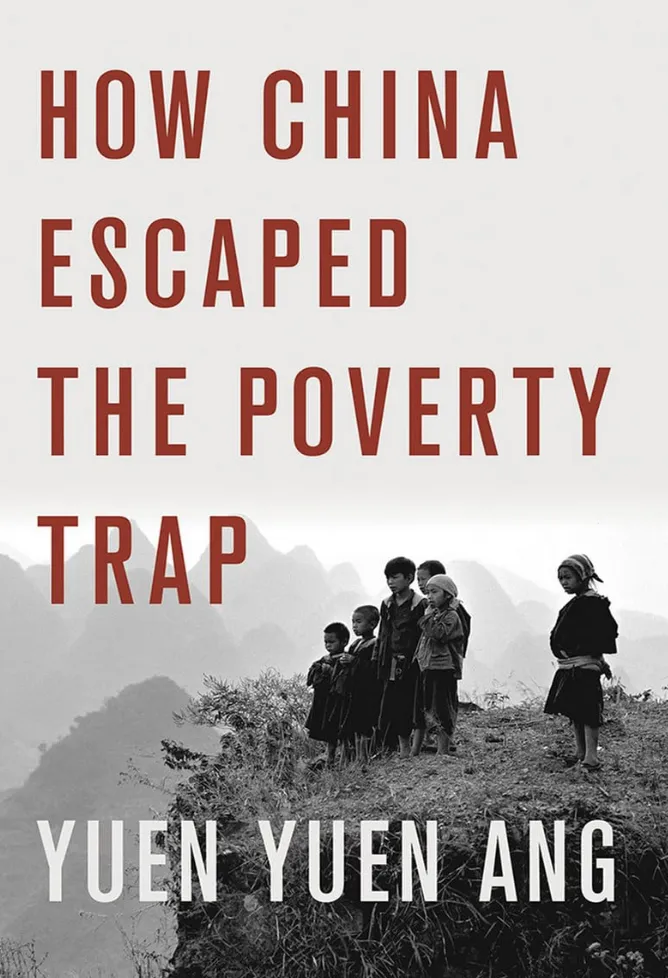How China Escaped The Poverty Trap - Yuen Yuen Ang

Book Title:
How China Escaped The Poverty Trap.
Author:
Yuen Yuen Ang
Genre:
Economics, Economic Development, Political Economy
Synopsis:
This book tells the extraordinary story of China’s rise from economic backwater to global superpower. How China Escaped the Poverty Trap is a remarkable investigation that seeks to uncover how a formerly Maoist nation embraced markets and capitalism, and how these forces transformed China.
The author argues that gradual adaptation and a strong working relationship between central government and bureaucracy helped shape, secure, and ultimately foster thriving markets. Ang first notes that the prevailing economic development model does not align with China’s path to industrialization. China lacked strong institutions and functional markets and had just emerged from Maoist rule marked by economic and social upheaval. So how did it succeed? How did China successfully open up to the world and embrace markets and capitalism when the Soviet Union failed?
China succeeded because of, not despite, its institutions. Ang reveals the central party’s role in leveraging existing institutions and gradually modernizing them, first building markets and later opening the floodgates to reform. She describes the expertly orchestrated improvisation that began in China’s coastal cities in 1978 and spread across the country over the next 30 to 40 years. Deng Xiaoping’s quote, “Crossing the river by feeling for the stones,” perfectly encapsulates China’s adaptable economic policy during its early market reforms.
Ang’s description of the co-evolution between markets and government offers a model for poorer or weaker nations: leverage the institutions you have to build markets. How China Escaped the Poverty Trap challenges us to rethink the conventional norms of economic development, encouraging a non-linear perspective on how nations can break free from poverty by analyzing China’s unique experience.
Personal Reflection:
This book is one of the best I have read on economics. Growing up, I idealized the West—its institutions and economy. I admired the Ottoman Tanzimat reforms and their commitment to Westernization. After the colonial period in North Africa, I deeply appreciated the tangible benefits Westernization brought to Tunisia. Yet, it never delivered the full industrialization and economic development that East Asia and China achieved.
Instead, it led to extractive, rentier capitalism, where the state chose winners and losers. The economy stalled once it reached the middle-income level, burdened by excessive regulations, complex laws, and political instability.
Tunisia hired countless development consultants and implemented numerous Western-modeled programs with little success. I witnessed this firsthand while working for an American development consultancy, acting as a cultural bridge—an American-educated local translating the gospel of development for the population. We tried imposing mature market norms on a country still in its early stages. What worked in the U.S. seemed ineffective elsewhere, and I felt much of the money spent on development initiatives was wasted.
This book should be the definitive guide to development economics, a must-have for any political or economic leader in so-called developing countries.
Professor Ang's vision can be summarized in her own words through the principles of the China model:
- Set boundaries for experimentation and flexibility.
- Foster incremental changes across interconnected areas simultaneously.
- Initially, define success narrowly.
- Give everyone a personal stake in the development process.
- Allow some to get rich first but pair the wealthy with the poor.
- Use weak institutions to build markets.
The China model capitalizes on what already exists rather than creating institutions from scratch or imposing untested foreign models on local contexts. It’s best summarized by the development axiom: harnessing "weak institutions" to build markets leads to "stronger" institutions for sustaining markets.
Professor Ang emphasizes that this process is nonlinear and fraught with uncertainty, as many factors must align. She notes the critical crossroads China faced in its development journey, any of which could have halted progress. Yet, she insists the goal is to create a healthy feedback loop—a dynamic, reciprocal relationship between market and government that builds strength over time.
This book was a fascinating and enjoyable read, offering a refreshing perspective on economic development that deserves to be mainstream.
Overall Rating:
5 out of 5